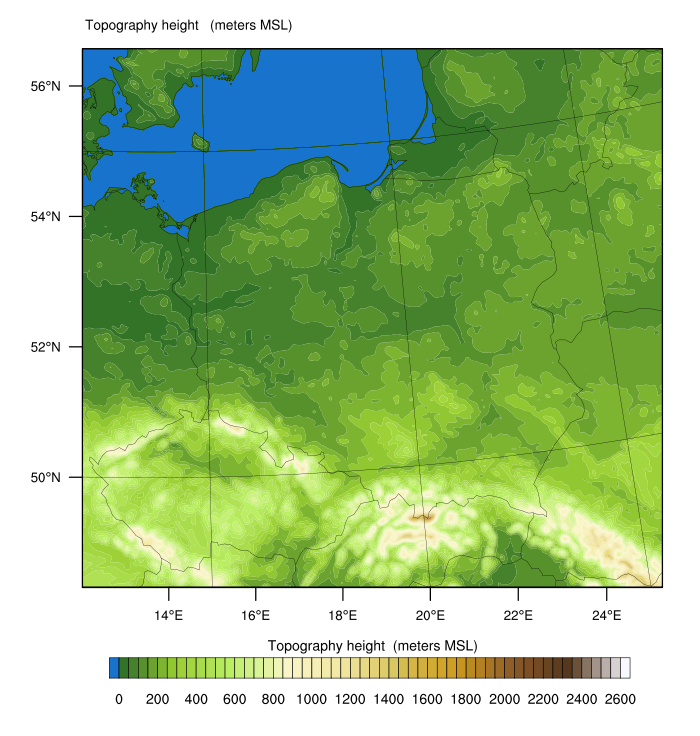Prognozy pogody
Prognozą pogody nazywamy prawdopodobny przebieg zjawisk pogodowych nad danym obszarem. Przygotowanie prognozy wymaga znajomości aktualnego stanu pogody wyrażonego wielkością elementów meteorologicznych, tendencji ich zmian oraz znajomości procesów fizycznych zachodzących w atmosferze. Przez szereg lat prognozy przygotowywane były tylko w oparciu o wiedzę i doświadczenie synoptyków na podstawie obserwacji z narodowych sieci pomiarowych. Obecnie do prognoz wykorzystywane są dodatkowo modele numeryczne oraz „nowcastingowe”.
Podstawą pracy modeli są tzw. warunki początkowe bazujące na dotychczasowych wynikach prognoz oraz wynikach obserwacji i pomiarów. W modelach numerycznych procesy fizyczne zachodzące w atmosferze zapisane są w postaci równań matematycznych – nieliniowych cząstkowych równań różniczkowych. Modele prognozują wartości elementów meteorologicznych dla zadanej siatki obliczeniowej dla różnych poziomów atmosfery. Wszystkie procesy atmosferyczne mające miejsce w skali mniejszej niż zadana siatka obliczeniowa poddane są parametryzacji.
Prognozy „nowcastingowe” są prognozami krótkoterminowymi, przygotowywanymi najczęściej do 6 godzin naprzód. Idea prognozowania „na teraz” związana jest z bieżącą asymilacją danych pomiarowych i oceną aktualnego stanu atmosfery. Większość modeli numerycznych umożliwia przygotowanie prognozy na kilka dni naprzód. Prognozy długoterminowe przygotowywane są zazwyczaj na podstawie modeli globalnych (np. GFS, NOGAPS, GEM), przy czym wraz z wydłużeniem okresu prognozowania jej wiarygodność zmniejsza się. Do prognoz operacyjnych używa się najczęściej modeli regionalnych (np. WRF, MM5, ALADIN, COSMO), których rozdzielczość przestrzenna sięga zazwyczaj kilku kilometrów.
Na stronie geoportalu prezentowane są wyniki prognoz wybranych elementów meteorologicznych (temperatura, wilgotność względna, ciśnienie atmosferyczne, prędkość i kierunek wiatru, opady oraz promieniowanie) z modelu Weather Research and Forecasting (WRF ARW) dla Polski (https://meteo.plgrid.pl/index.html) w rozdzielczości przestrzennej 4 km x 4 km. Prognozy przygotowywane są z godzinowym krokiem czasowym do 72 godzin naprzód. Prognoza oparta jest o warunki początkowe i brzegowe z reanaliz National Centers of Environmental Prediction (NCEP GFS), dostępną w rozdzielczości 0.5° x 0.5°. Otrzymane wyniki prezentowane są w postaci map rozkładu przestrzennego poszczególnych elementów pogodowych oraz wskaźników biometeorologicznych wyznaczanych na podstawie wyników modelowania.

Oprac. H. Ojrzyńska, K.Wałaszek






